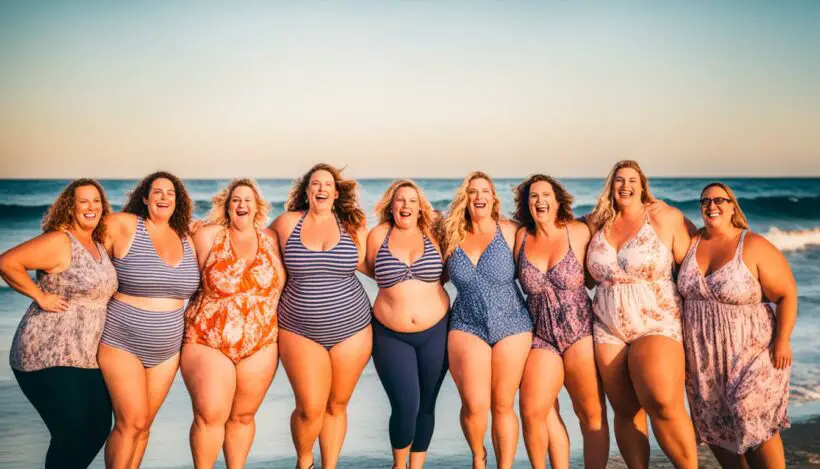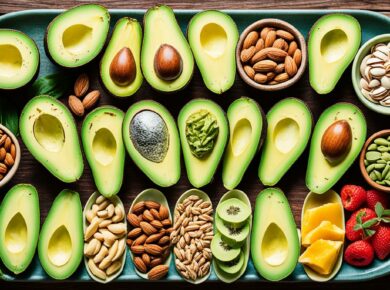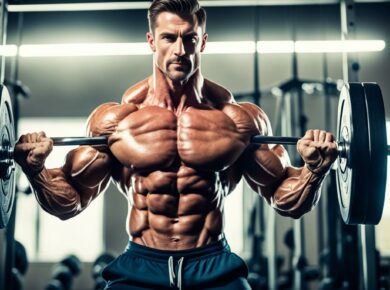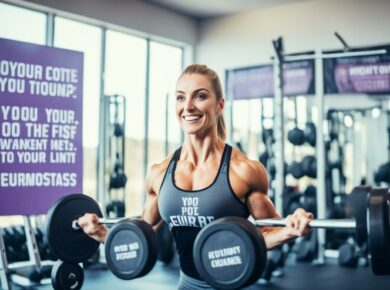Welcome to a journey of self-love, empowerment, and body acceptance. In a world that often bombards us with unrealistic beauty standards, it’s important to prioritize our mental health and well-being. Body positivity encourages us to embrace our unique bodies and foster a positive body image. By practicing self-care and boosting our self-esteem, we can navigate the waves of body positivity with confidence and empowerment.
Throughout this article, we’ll explore the influence of social media on body image, delve into personal stories of body positivity, examine the impact of body shaming on young people, highlight the importance of promoting body positivity and challenging beauty standards, discuss the influence of history and racism on body image, and address the challenges faced in the media landscape.
Join us as we navigate the torrent of information on appearance and uncover the tools to develop a healthier mindset. Let’s create a culture of self-acceptance, diversity, and mental wellness. Together, let’s empower ourselves and others to embrace our bodies unconditionally.
The Influence of Social Media on Body Image
Social media platforms like TikTok and Instagram have become powerful influencers when it comes to body image. With just a few taps on our screens, we are exposed to a curated world of idealized bodies, filtered photos, and unrealistic beauty standards. This constant exposure can lead to feelings of comparison, dissatisfaction, and a negative impact on our self-esteem and self-worth.
Influencers, with their perfectly edited images, create an illusion of flawlessness that is unattainable for the average person. From flawless skin to the perfect hourglass figure, these images can set unrealistic expectations and make us question our own bodies. It’s important to remember that the images we see on social media are often heavily edited and do not reflect reality.
Moreover, social media tends to prioritize physical appearance over personality and accomplishments. It perpetuates the objectification of bodies and emphasizes the importance of looking a certain way, rather than valuing one’s individuality and achievements. This can lead to a narrow definition of beauty and a diminished sense of self-worth.
Cyberbullying based on body shape and appearance is another concerning issue on social media. Individuals who do not fit into society’s beauty standards often become targets of hurtful comments and negativity. This can have a detrimental effect on their self-esteem and overall well-being.
However, social media can also be a powerful tool for promoting body positivity, self-acceptance, and positive representation of diverse body types. Influencers, activists, and content creators are using their platforms to challenge beauty standards and advocate for self-love and acceptance. They share their own stories and experiences, creating conversations that inspire and empower others to embrace their bodies as they are.
When used mindfully, social media can help individuals adopt healthier lifestyles and connect with supportive communities. By following accounts that promote body positivity and celebrate all body types, we can curate an online environment that uplifts and encourages self-acceptance.
It’s important to remember that everyone’s body is unique, and there is no one-size-fits-all definition of beauty. Embracing our individuality and focusing on our inner qualities can lead to a healthier and more positive relationship with our bodies.
The Personal Journey of Body Positivity
Embarking on the path of body positivity often starts with a deeply personal struggle against self-harm, self-hate, and the pressure to conform to societal beauty standards. The media’s portrayal of diverse bodies can contribute to feelings of inadequacy and low self-esteem, further marginalizing individuals who don’t fit conventional ideals of beauty. However, amid this landscape, the body positivity movement emerged in the mid-2010s, providing a much-needed platform for promoting self-love and acceptance of all body types.
Influential figures like Jes Baker, Sonya Renee Taylor, and Jessamyn Stanley have made significant contributions to the movement, creating a diverse and inclusive community that celebrates radical self-acceptance. Their voices have helped individuals on their personal journeys of body acceptance, challenging the prevailing standards of beauty perpetuated by the media and entertainment industry.
However, while the body positivity movement has made remarkable strides, there is still much work to be done. Larger bodies continue to be underrepresented in mainstream media, perpetuating the notion that only certain bodies are desirable or deserving of love and acceptance. The entertainment industry, in particular, plays a significant role in shaping societal beauty standards, and its influence should be harnessed to promote a more inclusive and body-positive culture.
By embracing body positivity, individuals embark on a transformative journey of self-love and acceptance. Rejecting self-harm and self-hate, they join a growing movement that challenges the restrictive and damaging standards of beauty perpetuated by the media. This journey of self-discovery and empowerment is a testament to the power of resilience and the need for continued progress towards a society that celebrates and embraces all bodies, irrespective of their shape, size, or appearance.
The Impact of Body Shaming on Young People
Body shaming and bullying based on appearance can have a significant impact on the self-esteem and mental health of young people. Despite growing up in a supposedly body-positive environment, Generation Z still faces body shaming and unrealistic beauty ideals.
Social media plays a significant role in perpetuating these standards through manipulated images and filters. It creates a platform for comparison and judgment, where young individuals are exposed to curated and idealized versions of others. This can lead to negative behaviors such as restrictive eating, self-criticism, and excessive exercising as they strive to attain the unattainable.
Furthermore, the term “body positivity” has been co-opted by certain celebrities and influencers, leading to a dilution of its original purpose. It has become another marketing tool rather than a movement focused on self-acceptance and diversity.
To address the detrimental effects of body shaming, young people should seek therapy and support. Therapy can provide a safe space to explore and challenge negative beliefs and behaviors. Additionally, building a supportive network of friends and advocates who promote body acceptance and self-esteem can be invaluable.
By raising awareness about the impact of body shaming on mental health and advocating for a more inclusive and accepting society, we can create an environment that nurtures the self-esteem and well-being of young people.
In the image above, we can see the negative impact of body shaming on young individuals and the importance of promoting a positive body image.
Promoting Body Positivity and Challenging Beauty Standards
Despite the challenges, there is a growing wave of positivity and inclusivity in the body positivity movement. Many individuals and brands are championing realistic body images and challenging unrealistic beauty standards. This shift is fostering a healthier body image and promoting self-acceptance at every size.
Social media platforms have become a powerful tool for self-expression, self-love, and finding support from like-minded individuals. They offer a space for diverse representation and empowering messages that promote body positivity and self-acceptance. By curating our social media feeds and following accounts that inspire self-esteem, we can create an environment that makes us feel good about ourselves.
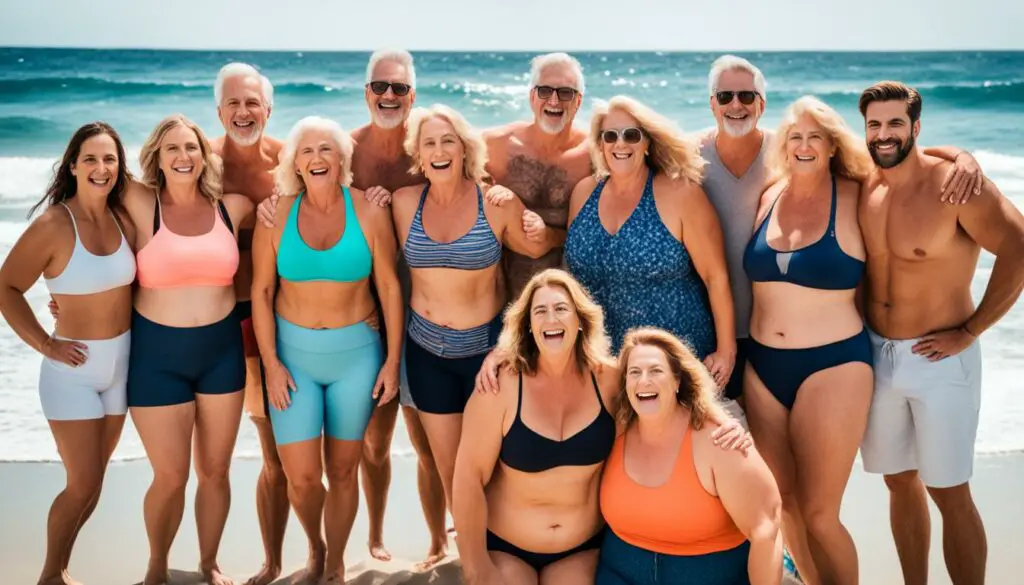
- This image visualizes the diversity and empowerment inherent in the body positivity movement.
Empowering individuals to embrace their bodies unconditionally is at the core of the body positivity movement. It involves challenging society’s unrealistic beauty standards and encouraging self-love and self-acceptance. Through diverse representation and positive messaging, body positivity empowers individuals to break free from the shackles of societal expectations and find joy and confidence in their unique selves.
With continued efforts to promote body positivity, we can create a more inclusive and supportive world where diverse bodies are celebrated. Together, we can challenge beauty standards and empower one another to embrace who we are, just as we are.
The Influence of History and Racism on Body Image
The history of body image and appearance culture in America is deeply intertwined with racism and Eurocentric beauty ideals. During the era of European slave trade, colonizers used body weight as a means to differentiate themselves from enslaved and colonized populations. This propagated the belief that Black people were inherently prone to a lower form of corpulence. The association of thinness with racial and Christian propriety further fueled discrimination and weight-based oppression.
Weight discrimination and the imposition of cultural ideals have been deeply rooted in American society, perpetuating biases and stereotypes surrounding body image. These oppressive beauty standards have long-lasting impacts on marginalized communities, leading to body shame and a disconnection from one’s own body.
Black activists and writers have recognized the connections between weight discrimination and racism, shedding light on this often overlooked aspect of the body positivity movement. While addressing gender discrimination and misogyny is vital, it is equally important to address the intersectionality of racism and body image issues. By acknowledging and challenging the historical influence of racism on body image, we can work towards creating a more inclusive and accepting society.
It is essential to recognize the impact of historical racial politics and actively promote body positivity for all individuals, regardless of their race or background. By embracing diverse body types and challenging discriminatory beauty standards, we can foster a culture of acceptance and equality.
Recognizing the Intersectionality of Weight Discrimination and Racism
- The European slave trade perpetuated the belief that Black people were prone to a low form of corpulence.
- Thinness became associated with racial and Christian propriety, leading to discrimination and weight-based oppression.
- Weight discrimination and cultural ideals have had a lasting influence on body image in America.
- Black activists and writers have shed light on the connections between weight discrimination, racism, and body image.
By addressing the intersectionality of weight discrimination and racism, we can foster a more inclusive and equitable society where all individuals feel accepted and empowered.
The Challenges of Body Positivity in the Media
The media has long played a significant role in shaping beauty standards and perpetuating a narrow definition of attractiveness. In the 1980s and 1990s, the media enforced a monoculture that idealized thinness, leading to widespread insecurities about body image. This narrow representation excluded and marginalized individuals who didn’t fit within these predetermined norms, negatively impacting their self-esteem and self-acceptance.
Unfortunately, the weight loss industry and cosmetic surgery industries capitalized on these insecurities, further perpetuating unrealistic beauty standards and profiting from people’s desire to conform. Advertising, in particular, has often emphasized the need to achieve a specific body shape or size, creating a toxic environment that fosters body dissatisfaction and self-criticism.
While there has been some progress in recent years towards promoting body diversity and challenging these beauty ideals, criticism and discrimination continue to persist. The rise of social media has both positive and negative impacts on body positivity. On one hand, it provides a platform for self-expression and representation, allowing individuals to share their stories and challenge societal norms. It has become a powerful tool for promoting body diversity, inclusivity, and acceptance.
The Impact of Social Media on Body Positivity
However, social media also has its drawbacks. The filtered images and photoshop that dominate platforms like Instagram can perpetuate unrealistic beauty standards and create a distorted perception of reality. The constant exposure to seemingly flawless bodies can lead to feelings of inadequacy and comparison, undermining one’s self-esteem and self-worth.
Furthermore, despite the progress made, the media still faces criticism for its limited portrayal of body diversity. Mainstream media often fails to represent a true reflection of society, favoring a specific body type over others. This lack of representation can further perpetuate feelings of exclusion and perpetuate the idea that only certain bodies are worthy of acceptance.
It is important to acknowledge the progress that has been made and continue pushing for change. By promoting body diversity and challenging beauty standards, we can work towards a more inclusive society where every body is celebrated and accepted.
Navigating the Torrent of Information on Appearance
In the age of social media, staying informed about appearance and body image can be overwhelming. Especially for young people, such as teenagers, it is crucial to receive regular education on healthy relationships, social media, and body image. By addressing these topics, individuals can develop a healthier mindset and understanding of their own bodies.
One effective way to provide support and resources is through peer education programs. These programs create a safe space for young people to learn from their peers and engage in open discussions about body image. Additionally, therapy can offer valuable guidance and tools to navigate the complex landscape of appearance culture.
Conversations with young people are vital for their well-being. By providing them with accurate information, we can empower them to make informed decisions about body acceptance and social media consumption. Teaching the importance of healthy relationships, media literacy, and cultivating a positive self-image is essential to help them navigate the torrent of information on appearance.
Conclusion
Body positivity is a powerful movement that encourages self-acceptance, celebrates diversity, and fosters mental wellness and empowerment. Over the years, significant progress has been made in challenging unrealistic beauty standards and promoting body acceptance for individuals of all shapes, sizes, and backgrounds.
However, there is still work to be done. The media and social media platforms continue to have a profound influence on body image, often perpetuating unattainable ideals. Navigating this landscape requires careful education and critical thinking to protect our mental well-being.
By fostering a culture of self-love, support, and acceptance, we can empower individuals to embrace their bodies unconditionally. It is through this collective effort that we can promote mental wellness and help people lead fulfilling lives. Let us continue to champion body positivity, celebrate diversity, and ensure that everyone feels empowered and valued in their own skin.
